Palace and Gardens of Schönbrunn: Schönbrunn Palace is located in the outskirts of Vienna. Schönbrunn was the summer residence of the Habsburg emperors from the 18th century until 1918. Schönbrunn Palace was built to rival Versailles. Schönbrunn is a Baroque palace. The palace houses outstanding examples of decorative art. The world's first zoo (1752) is located in the gardens of Schönbrunn Palace. The Gloriette on a hill in the gardens of Schönbrunn offers beautiful views of the gardens and the palace. Schönbrunn was also the summer residence of the legendary Empress Elisabeth of Austria, better known as 'Sisi' (Sissi). Sisi fled from the strict etiquette in Vienna and began to travel restlessly, she returned to Vienna infrequently. Palace and Gardens of Schönbrunn gained the status as a UNESCO World Heritage in 1996. World Heritage Art: The Traveling Empress
www.werelderfgoedfotos.nl © Copyright World Heritage Photos
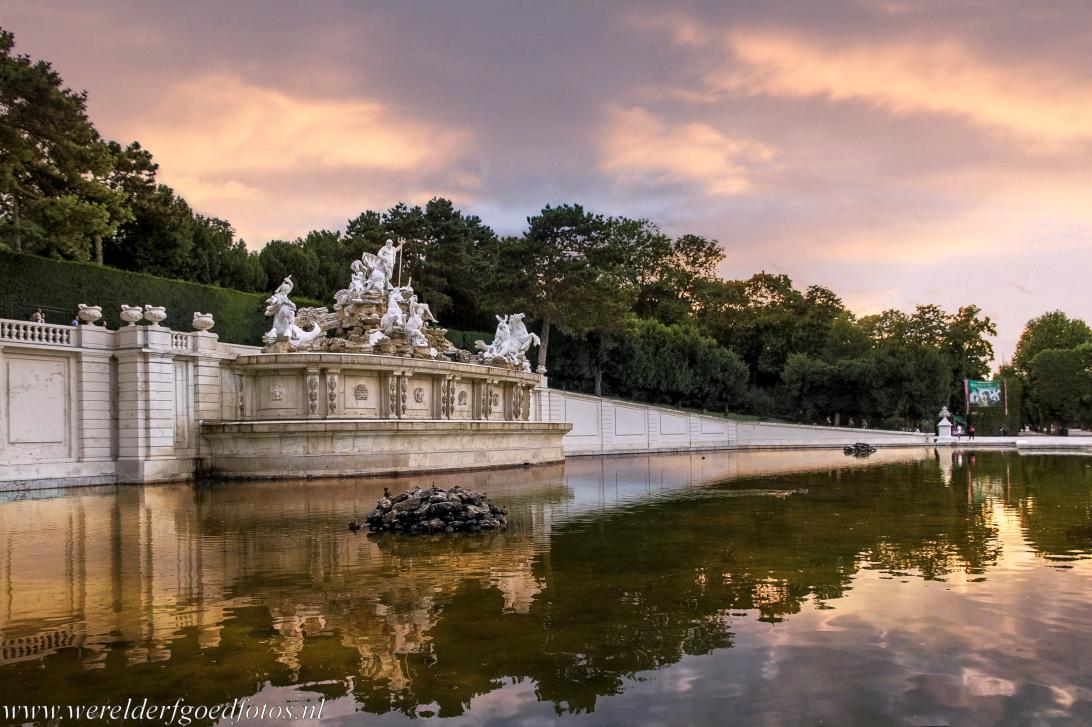
Palace and Gardens of Schönbrunn: The Neptune Fountain was designed as the crowning glory of the Great Parterre, the garden between the palace and the Neptune Fountain. The design of the gardens was commissioned by Empress Maria Theresia of Austria. The excavations for the pool startedin 1776, the Neptune fountain was completed in 1780, just before the death of the empress. The Palace and Gardens of Schönbrunn became a UNESCO World Heritage in 1996.

Palace and Gardens of Schönbrunn: The Neptune Fountain was designed as the crowning glory of the Great Parterre, the garden between the palace and the Neptune Fountain. The design of the gardens was commissioned by Empress Maria Theresia of Austria. The excavations for the pool startedin 1776, the Neptune fountain was completed in 1780, just before the death of the empress. The Palace and Gardens of Schönbrunn became a UNESCO World Heritage in 1996.
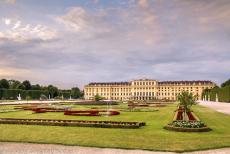
Schönbrunn Palace in Vienna is one of the most important cultural monuments of Austria and since the 1960s, it is one of the most popular tourist attractions in Vienna. Schönbrunn Palace was the summer residence of the Habsburg emperors from the 18th century until 1918, it was the most important centre of court life in Europe. Schönbrunn Palace is the symbol of the power of the Habsburgs over a long period in European history.
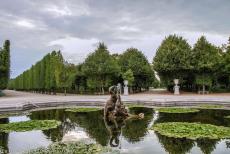
Palace and Gardens of Schönbrunn: The Star Pool with the Naiad Fountain in the evening, water lilies are spread across the water surface. The Star Pool and the Naiad Fountain are situated on the western diagonal axis of the Gardens of Schönbrunn. As a counterpart to the Star Pool, the Round Pool is situated on the eastern diagonal axis of the gardens. Both the pools have a Naiad Fountain. The western Naiads are playing with a sea creature, the eastern with a water bird.
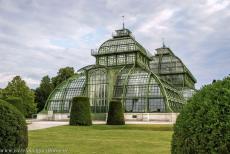
Palace and Gardens of Schönbrunn: The impressive Palmenhaus in the gardens is the largest of the four greenhouses in the gardens of Schönbrunn Palace. The Palmenhaus was built of steel and glass and has 45,000 glass panels, is 111 metres long, 28 metres wide and is 25 metres high, the greenhouse was the last of its kind to be constructed in Europe and is among the largest of its kind in the world. The greenhouse was opened in 1882, it houses about 4,500 plant species.
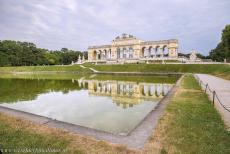
Palace and Gardens of Schönbrunn: The Gloriette is situated on Schönbrunn Hill. On the roof is an observation deck, it offers beautiful views of the gardens, Schönbrunn Palace and the city of Vienna. During the 19th century, the inner hall of the Gloriette was used as a dinning room. The Gloriette was destroyed during World War II, but it had already been restored in 1947. Today, it houses a café.
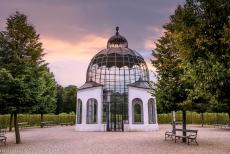
Palace and Gardens of Schönbrunn: The Columbary or dovecote was built in the period 1750-1755. The Columbary was intended to houses pigeons or doves. It has a dome-like copper roof. The four walled alcoves were created to provide the doves with a roosting space. A star-shaped network of footpaths around the small Columbary was created in 1760. The Palace and Gardens of Schönbrunn were inscribed on the UNESCO World Heritage List 2001.
